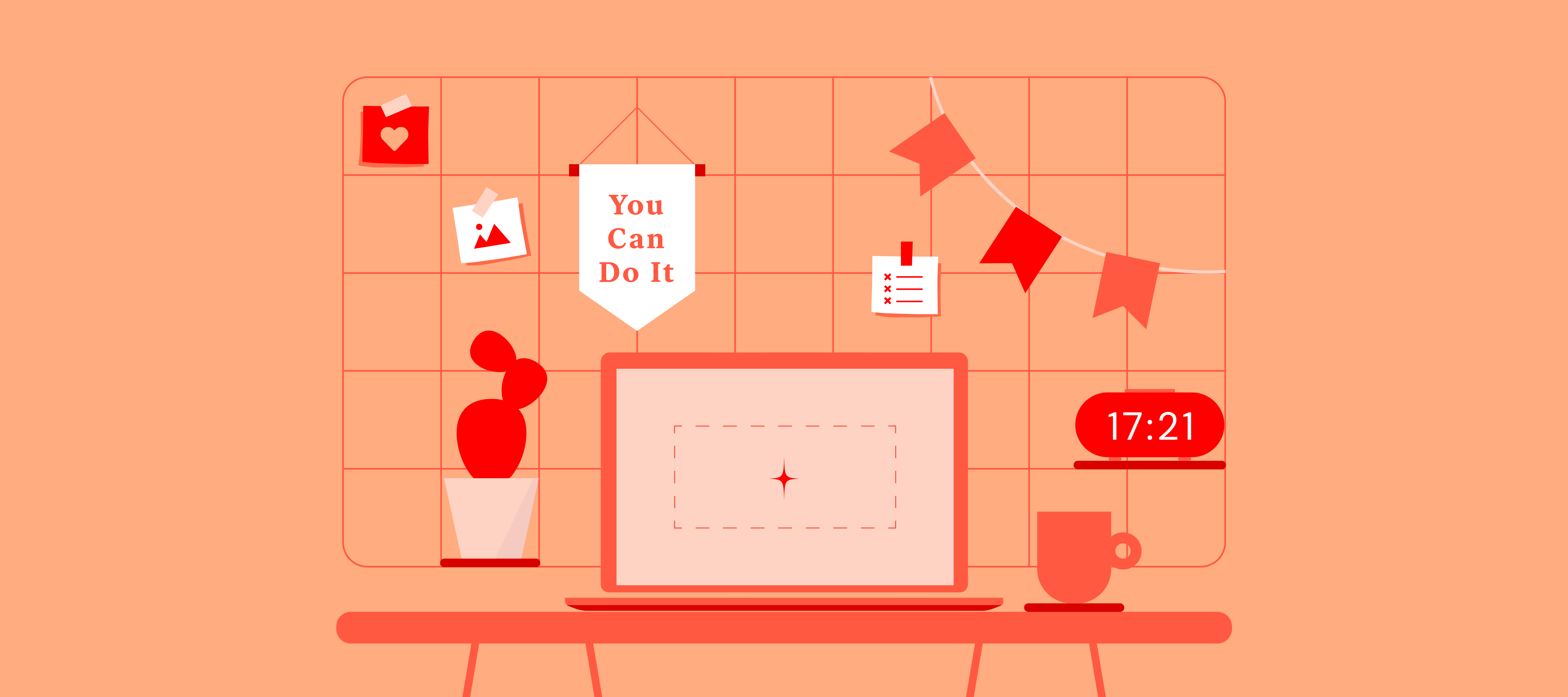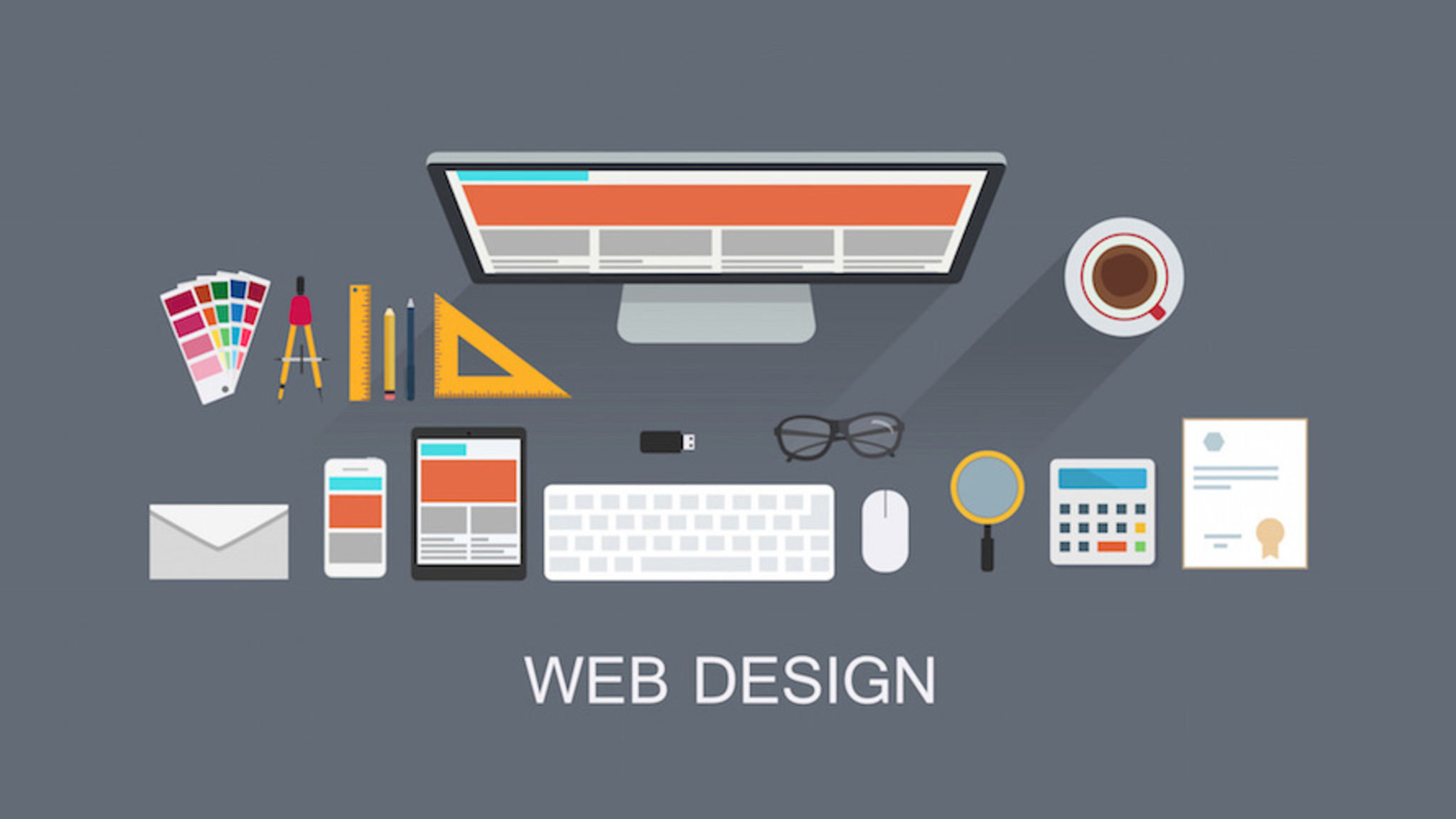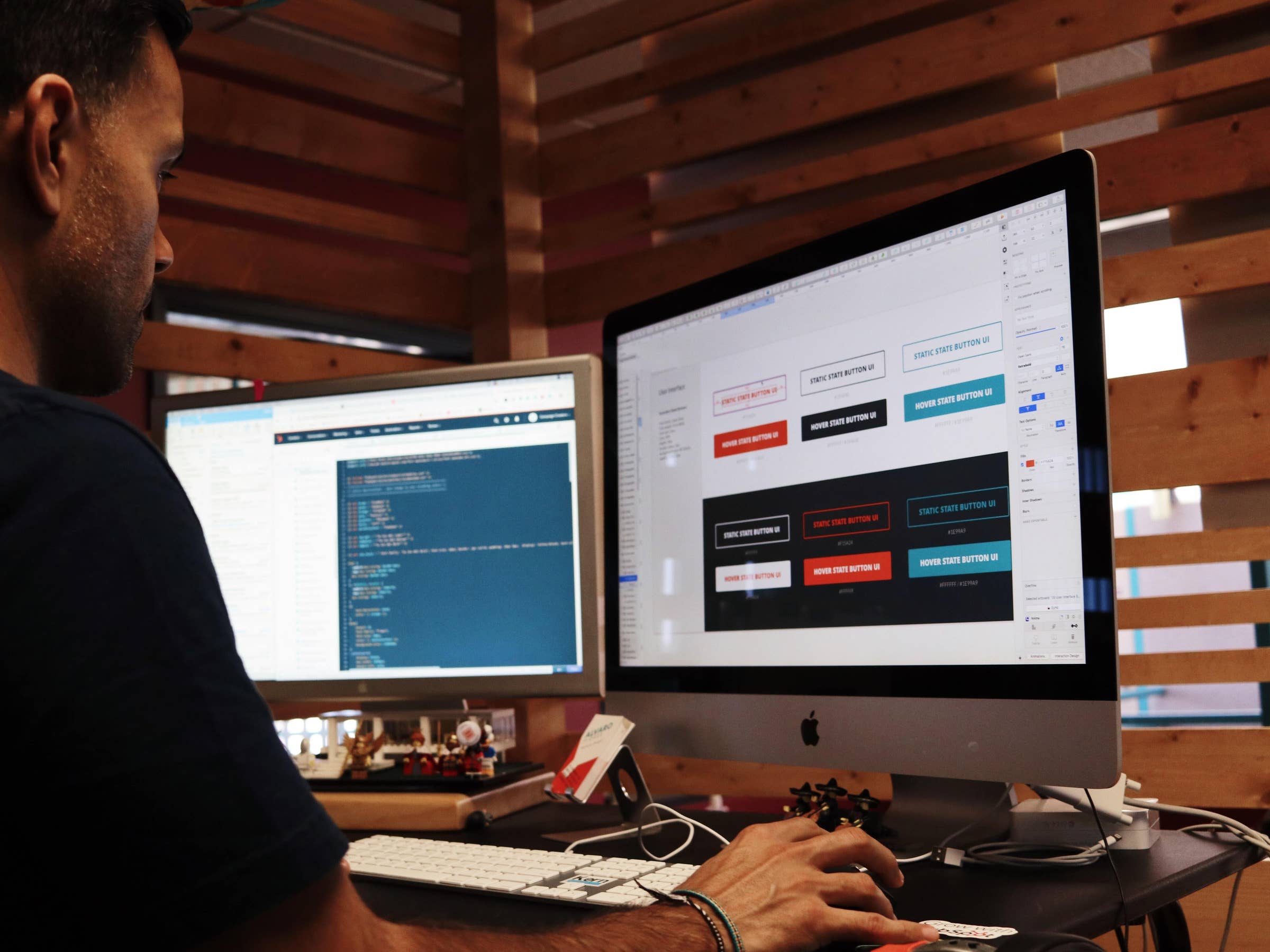All Categories
Featured
Table of Contents
- – Website Design - Best Ecommerce Web Design By ...
- – Law Firm Website Design, Attorney Web Design,...
- – Powderkeg: Web Design Madison, Wi Tips and Tr...
- – Web Design - Wikipedia Tips and Tricks:
- – Wicky Design: Philadelphia Web Design Tips an...
- – Top Web Design Companies - Find Web Designers...
- – Web Design Services - Verizon Small Business...
- – Web Design - Website Design Tutorials, Artic...
- – Arch Web Design: Top-rated Web Design Agency...
- – Wicky Design: Philadelphia Web Design Tips a...
- – Pueblo Web Design Tips and Tricks:
Website Design - Best Ecommerce Web Design By Shopify Tips and Tricks:
Quick summary Usability and the utility, not the visual style, determine the success or failure of a site. Since the visitor of the page is the only individual who clicks the mouse and for that reason decides whatever, user-centric design has actually established as a standard technique for effective and profit-oriented website design - web design frederick md.
and the utility, not the visual style, figure out the success or failure of a site. Since the visitor of the page is the only individual who clicks the mouse and for that reason chooses whatever, user-centric style has actually become a standard approach for successful and profit-oriented web design. After all, if users can't utilize a function, it might also not exist.
g. where the search box must be positioned) as it has actually currently been performed in a number of posts; instead we focus on the techniques which, utilized properly, can lead to more advanced design decisions and simplify the process of viewing provided information. Please see that you may be interested in the usability-related articles we've released prior to: Principles Of Excellent Site Design And Effective Website Design Guidelines, In order to use the concepts appropriately we first require to understand how users communicate with sites, how they believe and what are the fundamental patterns of users' behavior.
Law Firm Website Design, Attorney Web Design, Lawyer ... Tips and Tricks:
Visitors glance at each new page, scan a few of the text, and click the very first link that captures their interest or vaguely looks like the thing they're trying to find. In reality, there are big parts of the page they don't even take a look at. Most users search for something fascinating (or beneficial) and clickable; as soon as some promising prospects are discovered, users click.
If a page supplies users with top quality material, they are prepared to compromise the material with ads and the style of the site. This is the reason not-that-well-designed websites with top quality content get a great deal of traffic over years. Content is more crucial than the style which supports it.

Users do not check out, they scan. Notice how "hot" locations abrupt in the middle of sentences. This is common for the scanning process. Really easy principle: If a website isn't able to meet users' expectations, then designer stopped working to get his task done effectively and the company loses money. The greater is the cognitive load and the less user-friendly is the navigation, the more ready are users to leave the site and look for alternatives.
Powderkeg: Web Design Madison, Wi Tips and Tricks:
Neither do they scan web page in a direct fashion, going sequentially from one website section to another one. Rather users satisfice; they pick the very first affordable alternative. As soon as they find a link that seems like it might cause the objective, there is a great opportunity that it will be immediately clicked.
It does not matter to us if we understand how things work, as long as we can use them. If your audience is going to act like you're designing billboard, then style great signboards." Users wish to be able to manage their web browser and rely on the constant information discussion throughout the website.
If the navigation and site architecture aren't instinctive, the variety of question marks grows and makes it harder for users to understand how the system works and how to receive from point A to point B. A clear structure, moderate visual ideas and quickly identifiable links can assist users to find their course to their aim.
Web Design - Wikipedia Tips and Tricks:

claims to be "beyond channels, beyond products, beyond distribution". What does it indicate? Given that users tend to check out sites according to the "F"-pattern, these 3 statements would be the very first aspects users will see on the page once it is loaded. The style itself is simple and instinctive, to comprehend what the page is about the user needs to browse for the answer.
Once you have actually attained this, you can communicate why the system is useful and how users can benefit from it. Do Not Waste Users' Persistence, In every project when you are going to provide your visitors some service or tool, try to keep your user requirements very little.
Newbie visitors are willing to, not filling long web types for an account they may never utilize in the future. Let users check out the site and find your services without forcing them into sharing personal information. It's not reasonable to force users to go into an e-mail address to check the function.
Wicky Design: Philadelphia Web Design Tips and Tricks:
And that's what you want your users to feel on your web website. The registration can be done in less than 30 seconds as the type has horizontal orientation, the user doesn't even need to scroll the page.
A user registration alone suffices of an impediment to user navigation to reduce inbound traffic. 3. Manage To Focus Users' Attention, As websites offer both fixed and dynamic material, some aspects of the interface draw in attention more than others do. Obviously, images are more appealing than the text just as the sentences marked as bold are more appealing than plain text.
Focusing users' attention to particular locations of the website with a moderate usage of visual aspects can help your visitors to receive from point A to point B without thinking of how it actually is supposed to be done. The less enigma visitors have, the they have and the more trust they can establish towards the business the site represents.
Top Web Design Companies - Find Web Designers Here Tips and Tricks:
4. Make Every Effort For Function Direct exposure, Modern web designs are normally slammed due to their approach of assisting users with aesthetically appealing 1-2-3-done-steps, large buttons with visual results and so on. From the design viewpoint these components in fact aren't a bad thing. On the contrary, such as they lead the visitors through the website material in a very basic and easy to use way.
The site has 9 main navigation options which are noticeable at the first glance. What matters is that the material is well-understood and visitors feel comfy with the way they connect with the system.
com gets straight to the point. No cute words, no overemphasized declarations. Rather a price: simply what visitors are looking for. An optimum option for reliable writing is touse brief and concise phrases (come to the point as rapidly as possible), use scannable design (categorize the material, utilize numerous heading levels, use visual elements and bulleted lists which break the circulation of uniform text blocks), usage plain and objective language (a promo doesn't require to seem like ad; give your users some sensible and objective reason why they must utilize your service or stay on your site)6.
Web Design Services - Verizon Small Business Essentials Tips and Tricks:
Users are hardly ever on a site to enjoy the design; moreover, in many cases they are trying to find the details despite the design - web design frederick md. Pursue simpleness instead of intricacy. From the visitors' viewpoint, the finest website style is a pure text, without any ads or further material obstructs matching exactly the question visitors utilized or the material they have actually been looking for.
Finch plainly presents the information about the site and gives visitors an option of alternatives without overcrowding them with unneeded content. Not just does it help to for the visitors, but it makes it possible to view the info presented on the screen.
Complex structures are harder to read, scan, evaluate and work with. If you have the choice between separating 2 design sections by a visible line or by some whitespace, it's generally better to use the whitespace option. (Simon's Law): the much better you manage to provide users with a sense of visual hierarchy, the simpler your material will be to perceive.
Web Design - Website Design Tutorials, Articles And Free Stuff Tips and Tricks:
The exact same conventions and guidelines ought to be used to all elements.: do the most with the least amount of cues and visual components. Clarity: all elements should be designed so their meaning is not ambiguous.
Conventions Are Our Friends, Traditional style of site components doesn't lead to a boring web website. As they decrease the discovering curve, the need to figure out how things work. For circumstances, it would be a functionality headache if all sites had various visual discussion of RSS-feeds. That's not that various from our routine life where we tend to get used to fundamental concepts of how we arrange data (folders) or do shopping (placement of products).
comprehend what they're expecting from a website navigation, text structure, search positioning etc. A common example from usability sessions is to equate the page in Japanese (assuming your web users don't understand Japanese, e. g. with Babelfish) and supply your use testers with a job to find something in the page of different language.
Arch Web Design: Top-rated Web Design Agency For Saas ... Tips and Tricks:
Steve Krug recommends that it's much better to, however benefit from conventions when you don't. 10. Test Early, Test Frequently, This so-called TETO-principle should be applied to every web design project as use tests often provide into considerable issues and problems related to a provided design. Test not far too late, not insufficient and not for the incorrect factors.
Some important indicate remember: according to Steve Krug, and testing one user early in the job is much better than testing 50 near the end. Accoring to Boehm's very first law, mistakes are most regular during requirements and design activities and are the more pricey the later they are removed.
That means that you develop something, test it, repair it and then check it once again. There may be problems which have not been discovered throughout the first round as users were virtually blocked by other issues. usability tests. Either you'll be pointed to the issues you have or you'll be indicated the lack of major design flaws which remains in both cases a helpful insight for your project.
Wicky Design: Philadelphia Web Design Tips and Tricks:

This holds for designers. After you've dealt with a site for couple of weeks, you can't observe it from a fresh point of view anymore. You know how it is constructed and therefore you understand exactly how it works you have the wisdom independent testers and visitors of your site wouldn't have.
It can be connected to other locations such as graphic design, user experience, and multimedia arts, but is more appropriately seen from a technological standpoint. It has actually become a big part of people's everyday lives. It is difficult to picture the Internet without animated graphics, different designs of typography, background, videos and music.

Throughout 1991 to 1993 the World Wide Web was born. Text-only pages might be seen using a simple line-mode browser. In 1993 Marc Andreessen and Eric Bina, developed the Mosaic browser. At the time there were multiple browsers, however most of them were Unix-based and naturally text heavy. There had been no integrated technique to graphic style aspects such as images or sounds.
Pueblo Web Design Tips and Tricks:
The W3C was produced in October 1994 to "lead the Web to its full potential by developing common protocols that promote its advancement and ensure its interoperability." This discouraged any one business from monopolizing a propriety internet browser and programs language, which could have altered the effect of the Web as a whole.
As this has taken place the innovation of the web has actually likewise moved on. There have likewise been considerable modifications in the method people utilize and access the web, and this has changed how sites are designed.
Learn more about Lovell Media Group LLC or TrainACETable of Contents
- – Website Design - Best Ecommerce Web Design By ...
- – Law Firm Website Design, Attorney Web Design,...
- – Powderkeg: Web Design Madison, Wi Tips and Tr...
- – Web Design - Wikipedia Tips and Tricks:
- – Wicky Design: Philadelphia Web Design Tips an...
- – Top Web Design Companies - Find Web Designers...
- – Web Design Services - Verizon Small Business...
- – Web Design - Website Design Tutorials, Artic...
- – Arch Web Design: Top-rated Web Design Agency...
- – Wicky Design: Philadelphia Web Design Tips a...
- – Pueblo Web Design Tips and Tricks:
Latest Posts
Figma: The Collaborative Interface Design Tool. Tips and Tricks:
Website Design - Best Ecommerce Web Design By Shopify Tips and Tricks:
What Is A Web Designer? (2022 Guide) - Brainstation® Tips and Tricks:
More
Latest Posts
Figma: The Collaborative Interface Design Tool. Tips and Tricks:
Website Design - Best Ecommerce Web Design By Shopify Tips and Tricks:
What Is A Web Designer? (2022 Guide) - Brainstation® Tips and Tricks: